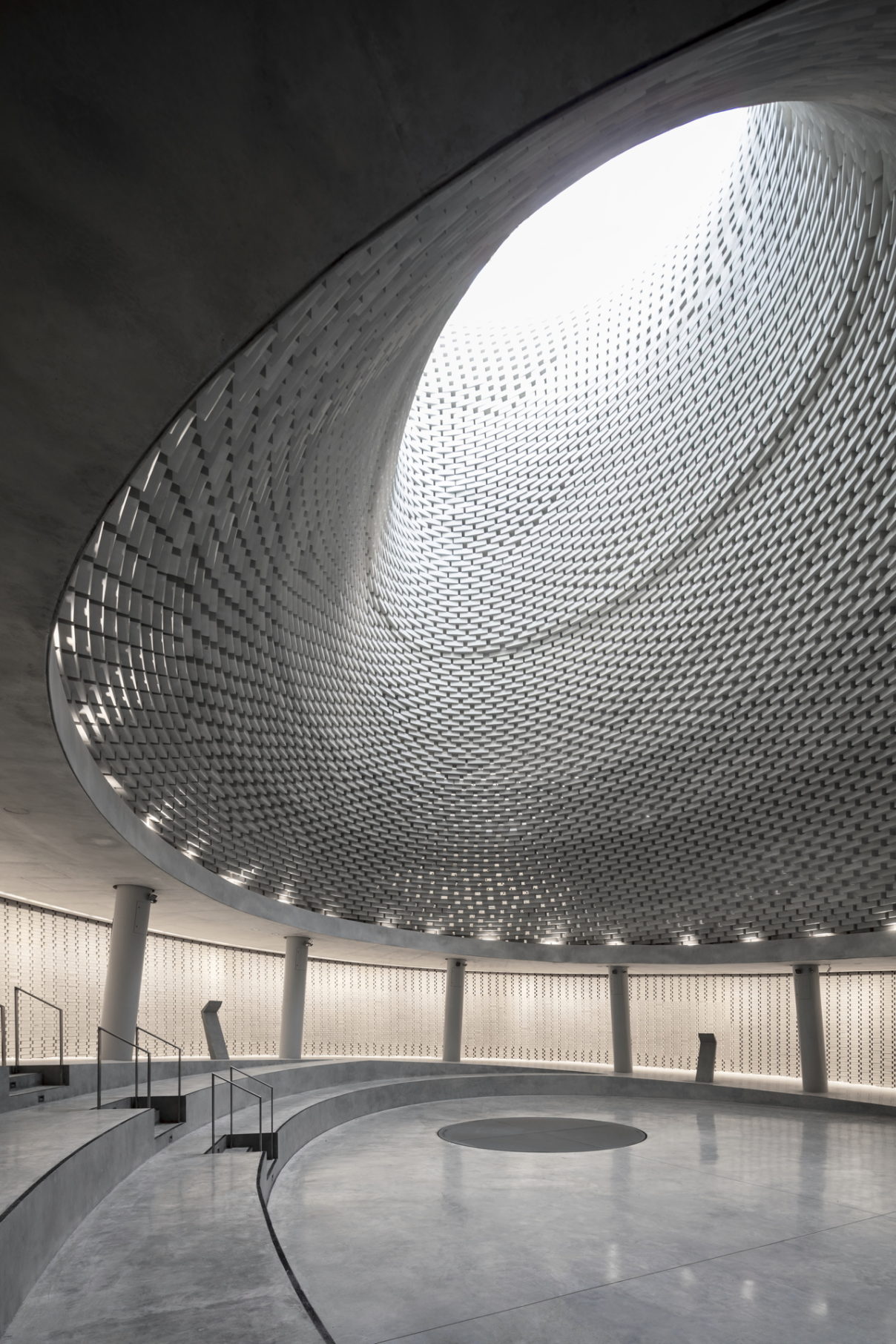
Inside the memorial.
Image courtesy of: Floor Nature
Jerusalem’s Tower of David Museum is plenty impressive without the National Memorial Hall. The museum is located in the restored ancient Citadel of the Old City near the Jaffa Gate. Located near the historic main entrance to Jerusalem, the museum tells the amazing story of the Israel’s capital city… beginning from the second millennium BCE through today.
However the introspective memorial to Israel’s fallen soldiers has brought the museum some new, well-deserved recognition. Beautifully designed, the National Memorial Hall in Israel is as impressive as it is somber.
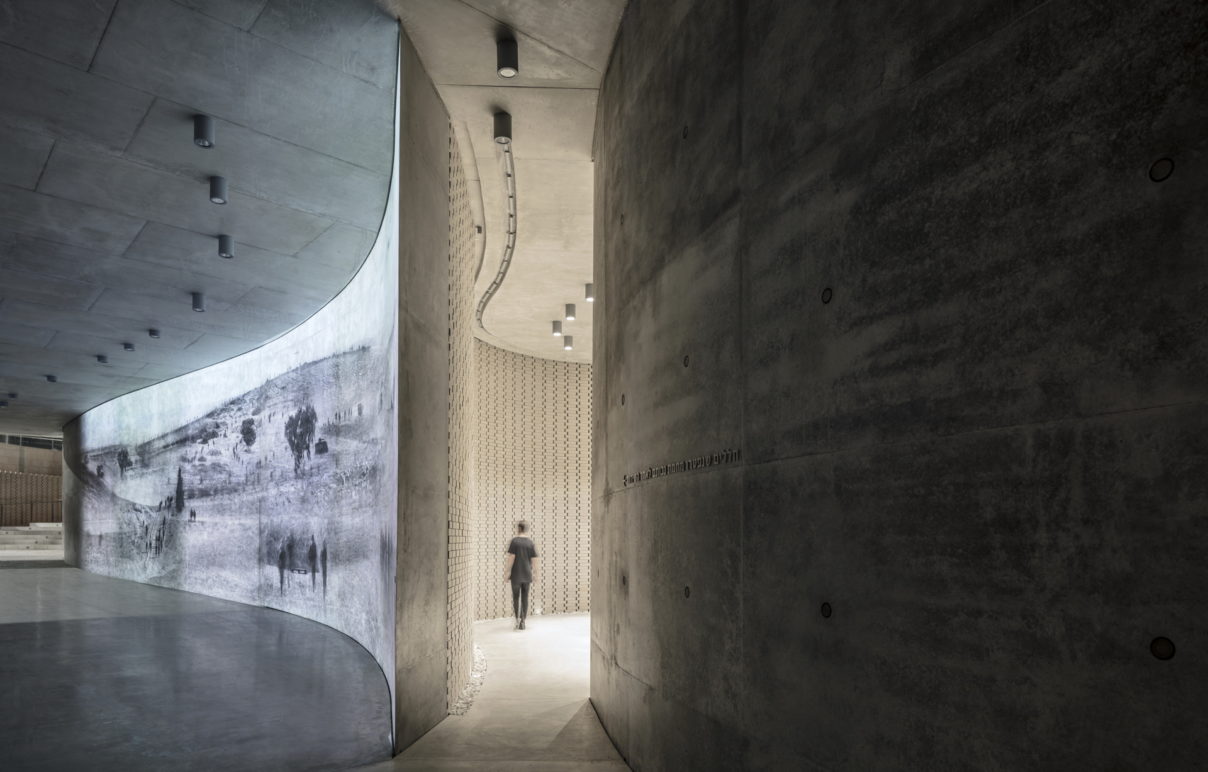
The design won the Dedalo Minosse International Prize.
Image courtesy of: Floor Nature
The National Memorial Hall is Israel’s national monument to all the soldiers who have given their lives to found and protect the State of Israel. The memorial was commissioned by the Israeli Defense Ministry in 2016; the intention is that it will serve as the central place of “pilgrimage” for the families who have lost soldiers to war.
Kimmel Eshkolot Architects along with Kalush-Chechik Architects were chosen to design the hall which was completed in 2017. The hall was “dug into” Mount Herzl… this allowed for an intimate space for those searching for two different experiences- either a personal space for commemoration or a place for a collective experience of commemoration.
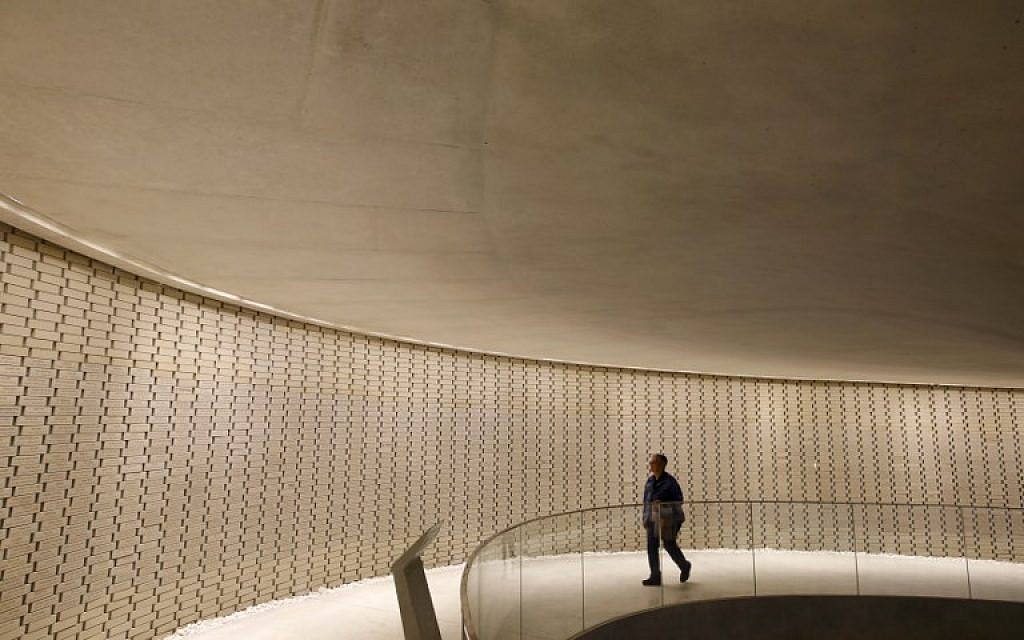
The location is flawless… next to Mount Herzl’s national cemetery.
Image courtesy of: Times of Israel, photographed by: Menahem Kahan
Courtesy of Floor Nature, “The mountain above the hall was reconstructed with an undulating funnel-shaped brick formation open to the sky, flooding the empty space with daylight. The fulcrum of the space inside is a “Wall of Names” 250 metres long surrounding the sculptural central structure of brick.”
Made of 23,000 bricks that run along a spiral-shaped, smooth concrete ramp, each brick was lovingly engraved with the name of one fallen soldier. The brick also displayed the deceased’s date of death. To further recognize the somber date, an incandescent light illuminates the brick upon the anniversary of the soldier’s death. As the spiral pathway winds up in a conical shape that leads to a skylight, the natural light shining from up above beautifully shines upon the beauty of the bricks.
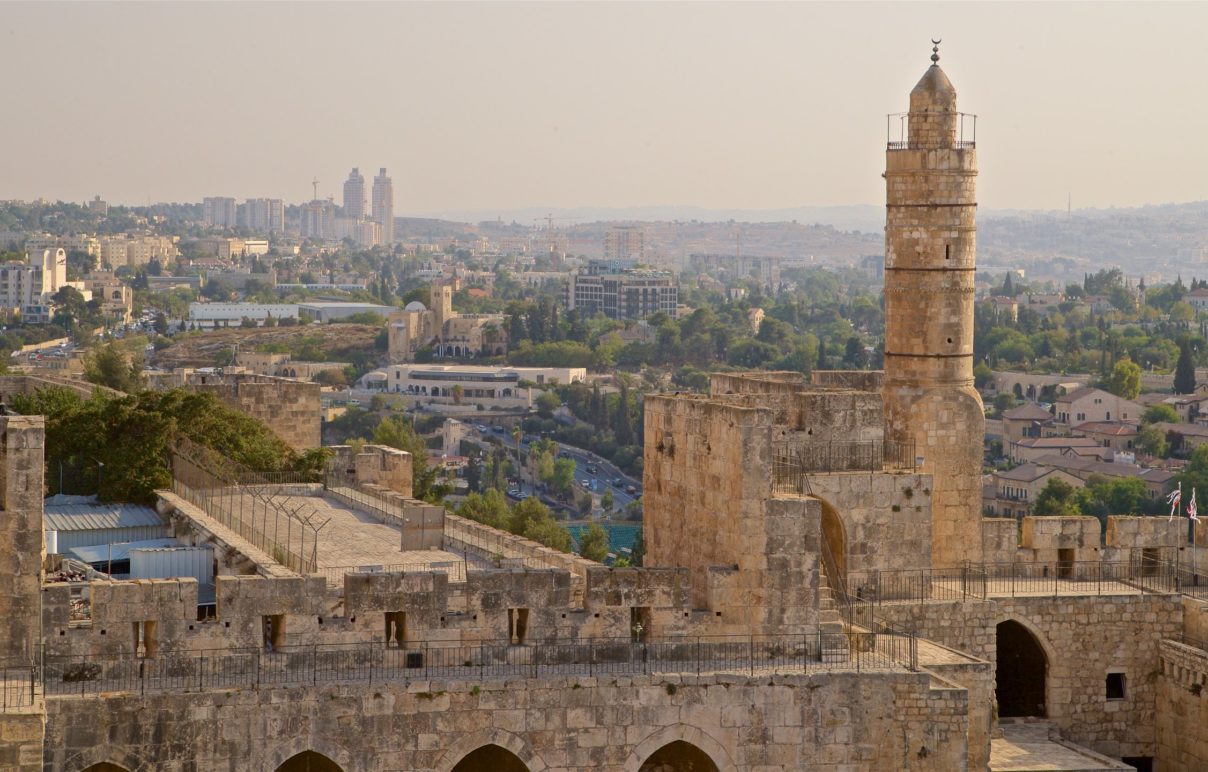
A beautiful view- the Tower of David.
Image courtesy of: Expedia
In addition to designing the Memorial Hall, Kimmel Eshkolot Architects was also involved in the complete overhaul of the museum… on the agenda was adding a “floating” floor and renovating the infrastructure such as the wiring which was positioned between the old stones and the new vaulted ceiling. This advancement offered the added benefit of improving acoustics.
The Tower of David Museum has been the subject of expansion with a new multi-level sunken entrance pavilion, additional restroom facilities, seven new galleries, a café, additional exhibition spaces, and two elevators to make the ancient citadel accessible to everyone. The careful guidance and oversight of the architectural firm was the saving grace in ensuring that the historic structure remain true to form.
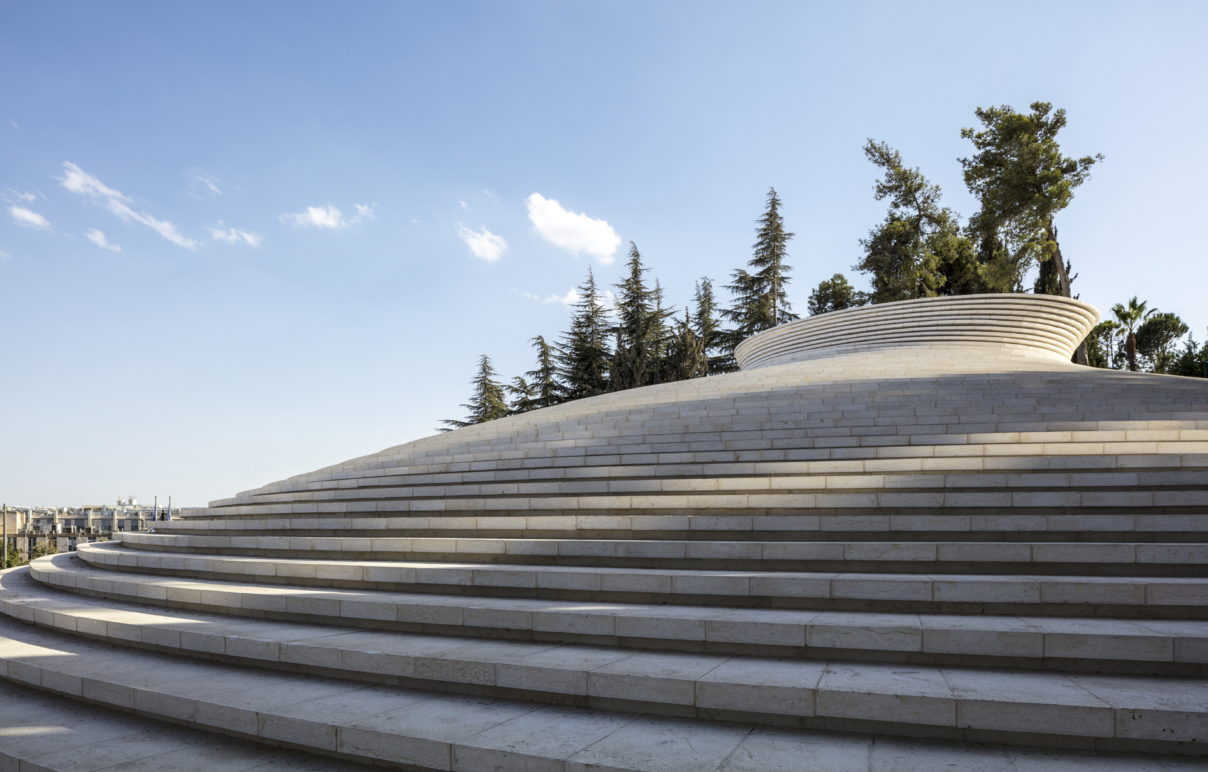
Those in charge of awarding the Dedalo Minosse International Prize said about their decision to designate the memorial as the 2019 winner, “The National Memorial Hall manages to create a heavenly spirituality while giving a tangible form to life and memory.” The traveling exhibition, which explains how the National Memorial Hall was designed, will also visit Tokyo, San Francisco, and Florence.
Image courtesy of: Floor Nature
Last year, the Tower of David Museum mounted an exhibition that provided an inclusive look at the creative process behind the award-winning National Memorial Hall including the “Wall of Names.” It was wonderful for so many to get an opportunity to see the everything that went into putting this emotional memorial together.
Etan Kimmel, the architect who designed the site and the architectural firm’s co-owner said about the monumental and immersive project, “Stone, concrete and light are the only materials used here. This place has a way of saying strong things- but quietly.” We could not agree more!